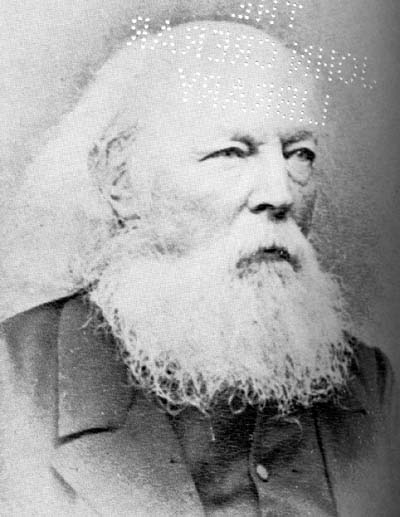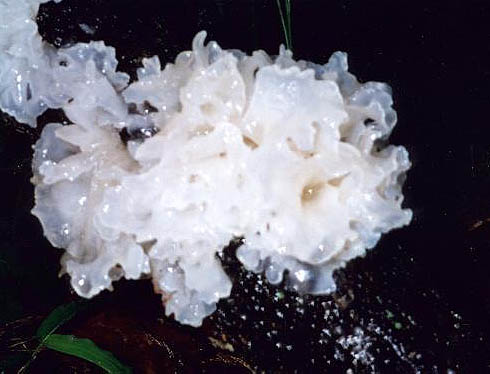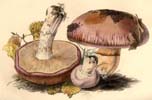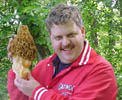|

|
 In any case, this job gave him a reputation; people started sending him fungi; he started publishing names for them (mostly in his Notices and "Decades"); and the rest is history. His first job established his position in the British botanical community; he published more names and became more famous; people sent him more fungi... it sort of snowballed. Hooker in particular sent him the fungi that came to Kew from the various biological expeditions of the time.
In any case, this job gave him a reputation; people started sending him fungi; he started publishing names for them (mostly in his Notices and "Decades"); and the rest is history. His first job established his position in the British botanical community; he published more names and became more famous; people sent him more fungi... it sort of snowballed. Hooker in particular sent him the fungi that came to Kew from the various biological expeditions of the time.
|
"Although other individuals, including the Belgian Charles Morren and an English clergyman, the Reverend Miles Berkeley, previously had suggested that this fungus was the cause of the potato murrain, it was actually de Bary's work that confirmed the fact. In two papers published in 1861 and 1863, de Bary described the life cycle of the fungus and proved its role in the blight." (p. 718)
In this huge, multi-volume work edited by Sir William Jackson Hooker, Berkeley wrote the section on the fungi.
A long-running series of articles, in which he published many of his new names
This is the paper in which Berkeley published his discovery of the basidium, apparently unaware of Léveillé's publication of the same discovery a year earlier.
Another major vehicle for Berkeley's publication of names. I'm not sure if he issued exsiccati along with these, or just the descriptions.
Series 8-10
Publication of species co-determined by Berkeley and Curtis (probably mostly Berkeley, actually)
Berkeley wrote the section on fungi for volumes 2 (Flora Novae-Zealandiae) and 3 (Flora Tasmaniae). I guess that gives away the secret that most of the Flora-izing was actually done *on the way* to Antarctica... The voyage was Sir Joseph Dalton Hooker's baby, and he edited the series of books on it.
The "North Pacific" in the title refers to the area of the country that we now call the Pacific North-West. If Wright was at all a good collector, I imagine that they got some great things out of this trip.
Just think: if Berkeley's terminology had caught on, we might all be studying Fungology instead of Mycology.
Part 1 of the article, on the Hymenomycetes, is co-authored; part 2, starting on page 341, covering a variety of non-basidiomycetous fungi, is by Berkeley.
I'm not sure what this is a flora of.
These are the articles in which Berkeley wrote up most of the collections sent to him by Moses Ashley Curtis.
 Glossary |  Mushrooms |  |  People |  Newsletter |  Events |